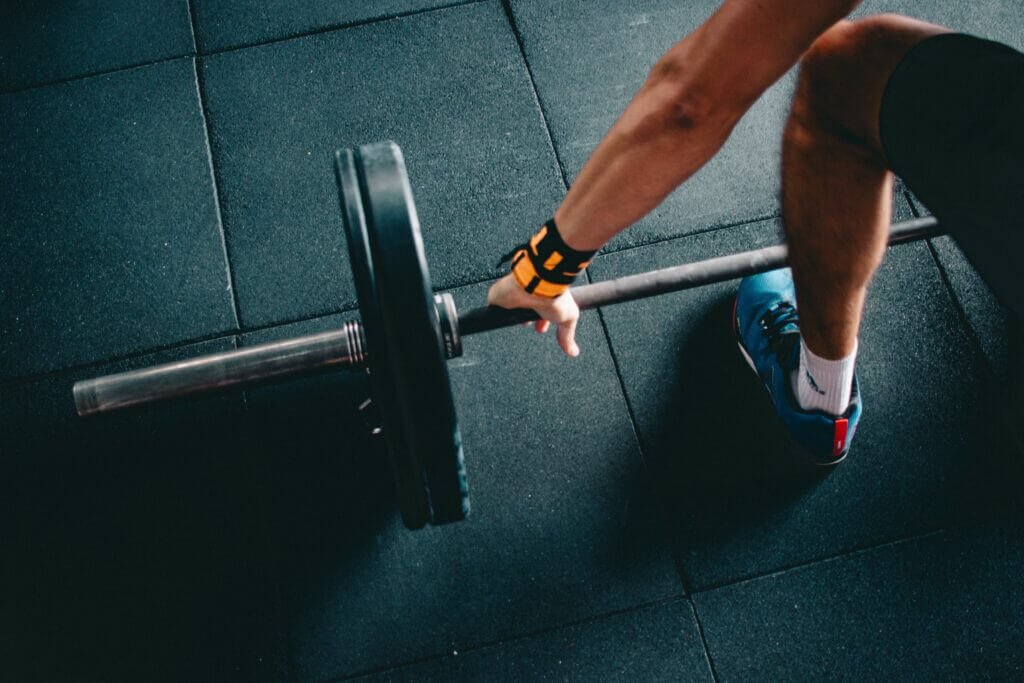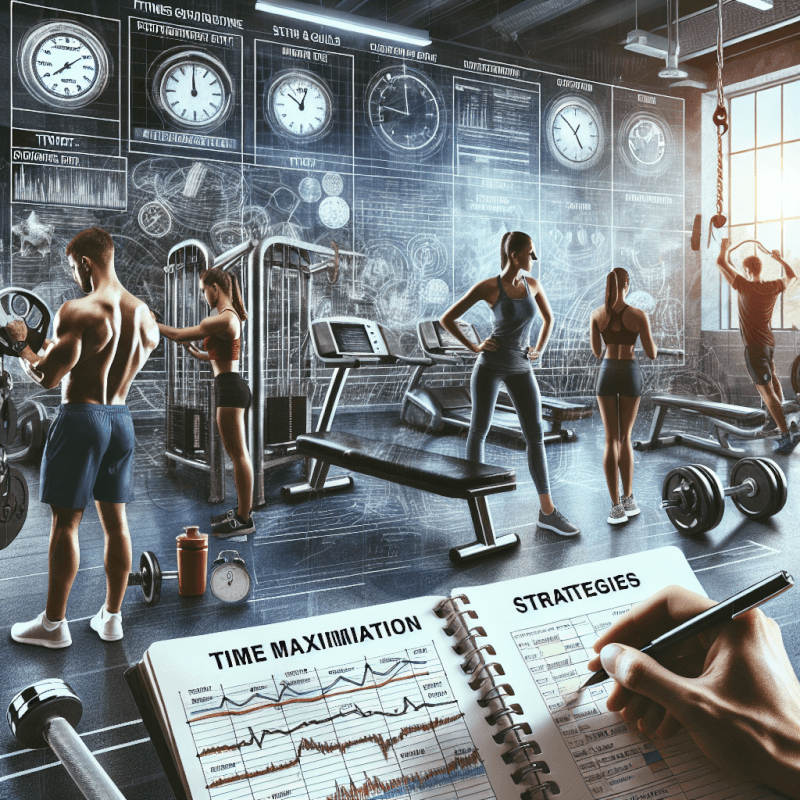So you’ve made the commitment to hit the gym and now you’re wondering how you can maximize your time there. Well, fret no more because we’ve got you covered. In this article, we’ll explore some simple yet effective tips on how you can make the most out of every minute spent at the gym. From setting clear goals to incorporating variety into your workouts, get ready to supercharge your gym sessions and achieve your fitness aspirations like a pro!

Setting goals
Identify your fitness goals
Before you start your fitness journey, it’s important to identify your specific fitness goals. Take some time to reflect on what you want to achieve through your workouts. Do you want to lose weight, gain muscle, improve endurance, or simply maintain a healthy lifestyle? By clearly defining your fitness goals, you can tailor your workouts and track your progress more effectively.
Set measurable and achievable targets
Once you’ve identified your fitness goals, it’s crucial to set measurable and achievable targets. Instead of setting vague goals like “get fit” or “be healthier,” break them down into smaller, more specific targets. For example, if your goal is to lose weight, aim to lose a certain number of pounds within a specific timeframe. Setting realistic targets will keep you motivated and give you a clear path to follow.
Establish a timeline for reaching your goals
In addition to setting measurable targets, it’s important to establish a timeline for reaching your goals. Having a timeline helps create a sense of urgency and keeps you accountable. Break down your goals into short-term and long-term milestones, and set deadlines for each. Remember to be flexible with your timeline as progress may vary, but having a framework will help you stay on track and motivated.
Creating a workout plan
Consult with a professional trainer
To create an effective workout plan, it’s beneficial to consult with a professional trainer. They have the knowledge and expertise to assess your current fitness level, discuss your goals, and design a personalized plan that suits your needs. A trainer can guide you in choosing the right exercises, teach you proper form and technique, and help prevent injuries. They can also provide ongoing support and motivation throughout your fitness journey.
Determine frequency and duration of workouts
When creating your workout plan, consider the frequency and duration of your workouts. The American Heart Association recommends at least 150 minutes of moderate-intensity aerobic activity or 75 minutes of vigorous-intensity aerobic activity per week. Spread these minutes across multiple days to allow your body time to recover. Additionally, incorporate strength training exercises at least two days per week, targeting different muscle groups.
Design a balanced routine targeting different muscle groups
A well-rounded workout plan should include a balance of cardiovascular exercises, strength training, and flexibility exercises. Cardiovascular exercises, such as running or cycling, help improve heart health and burn calories. Strength training exercises, such as weightlifting or bodyweight exercises, help build muscle and increase metabolism. Don’t forget to include flexibility exercises like yoga or stretching to improve mobility and prevent injuries. Designing a routine that targets different muscle groups ensures a comprehensive workout and helps prevent muscle imbalances.
Optimizing warm-up and cool-down
Perform dynamic stretches
Before starting your workout, it’s essential to warm up your body with dynamic stretches. Dynamic stretches involve moving parts of your body through a full range of motion, preparing your muscles and joints for the upcoming workout. Examples of dynamic stretches include arm circles, leg swings, and walking lunges. Performing these stretches helps increase blood flow to your muscles, enhances flexibility, and reduces the risk of injury.
Include light cardio activities
In addition to dynamic stretches, incorporating light cardio activities into your warm-up routine can further prepare your body for the workout. Activities such as jogging, jumping jacks, or cycling at a low intensity for 5-10 minutes help increase your heart rate gradually and warm up your muscles. This elevates your body temperature, increases blood flow, and promotes better performance during your workout.
Gradually increase or decrease intensity
During your cool-down phase, it’s important to gradually reduce the intensity of your workout. This allows your heart rate to return to its resting state and prevents blood from pooling in your muscles. Slow down your pace or decrease the resistance level on the equipment for a few minutes as you approach the end of your workout. This gradual decrease in intensity helps prevent dizziness, lightheadedness, and muscle soreness.
Being mindful of nutrition
Fuel your body with nutritious pre-workout meals
To make the most of your time at the gym, fueling your body with the right nutrients is crucial. Consuming a balanced meal or snack before your workout provides your body with the energy it needs to perform at its best. Opt for a combination of complex carbohydrates, lean protein, and healthy fats to sustain your energy levels. Examples of pre-workout meals include whole grain toast with peanut butter, Greek yogurt with fruit, or a chicken and vegetable stir-fry.
Stay hydrated during exercise
Proper hydration is essential for optimal performance and overall health. Make sure to drink enough water before, during, and after your workouts. The American Council on Exercise recommends consuming 17-20 ounces of water two to three hours before exercise, followed by regular sips during your workout. If you’re engaging in intense or prolonged exercise, consider hydrating with a sports drink containing electrolytes to replenish lost minerals.
Consume protein-rich foods for muscle recovery post-workout
After your workout, it’s important to prioritize muscle recovery. Consuming protein-rich foods post-workout helps repair and rebuild your muscles. Aim to consume a mix of high-quality proteins, such as lean meats, poultry, fish, beans, or tofu, within 30 minutes to an hour after your workout. Pair your protein with complex carbohydrates, like whole grains or fruits, to replenish glycogen stores and support muscle recovery.

Utilizing proper form and technique
Educate yourself on correct exercise form
Using proper form and technique during exercises is crucial for maximizing results and preventing injuries. Educate yourself on the correct form for each exercise you include in your workout routine. Utilize trustworthy sources such as reputable fitness websites, instructional videos, or seek guidance from a qualified personal trainer. Focus on maintaining proper posture, engaging the targeted muscles, and avoiding unnecessary strain or pressure on your joints.
Start with lighter weights to focus on technique
When starting a strength training routine, it’s important to begin with lighter weights to focus on mastering the correct technique. This allows your muscles to adapt to the movements and ensures you’re targeting the intended muscle groups effectively. Gradually increase the weight once you feel comfortable with the proper form. Remember, it’s essential to prioritize technique over the amount of weight lifted to prevent injuries and achieve optimal results.
Ask for assistance or hire a personal trainer if needed
If you’re unsure about proper form or need additional guidance, don’t hesitate to ask for assistance or consider hiring a personal trainer. They can provide valuable feedback, correct any form errors, and provide modifications to suit your individual needs. A personal trainer can also challenge you with new exercises and routines to keep your workouts interesting and effective. Investing in proper guidance can greatly improve your form, safety, and overall progress.
Mixing up your routine
Incorporate various types of exercises
To keep your workouts engaging and prevent boredom, incorporate various types of exercises into your routine. This not only challenges your body in different ways but also helps prevent plateaus in your progress. Mix cardiovascular exercises, such as running, swimming, or cycling, with strength training exercises like weightlifting or bodyweight exercises. Include flexibility exercises like yoga or Pilates to improve mobility and achieve a well-rounded workout.
Try different equipment or machines
Another way to make the most of your time at the gym is to try different equipment or machines. Most gyms offer a wide range of options, including treadmills, ellipticals, rowing machines, and cable machines. Experimenting with different equipment targets different muscles and adds variety to your routine. Trying new machines also keeps your workouts exciting and allows you to discover exercises that you may enjoy more than others.
Participate in fitness classes or group workouts
If you’re looking for a motivating and social workout experience, consider participating in fitness classes or group workouts. Many gyms offer a variety of classes, such as Zumba, spin, kickboxing, or yoga. Working out with others not only provides a sense of community but also pushes you to work harder and stay motivated. Group workouts often incorporate a mix of exercises, making them a fun and effective way to reach your fitness goals.

Monitoring and tracking progress
Keep a workout log or use a fitness app
One effective way to make the most of your time at the gym is to keep a workout log or use a fitness app. Tracking your workouts allows you to monitor your progress, identify patterns, and make adjustments as needed. Record details such as exercises performed, sets, reps, and weights lifted. Alternatively, utilize a fitness app that allows you to log your workouts, track calories burned, and measure your progress over time.
Measure and record key metrics regularly
In addition to tracking your workouts, it’s important to measure and record key metrics regularly. This may include body weight, body measurements, or performance indicators like running pace or weight lifted. Regularly assessing these metrics helps you gauge your progress and make necessary adjustments to your workout plan or nutrition. Celebrate milestones along the way, whether it’s hitting a new personal best or losing a certain amount of weight, as it provides a positive reinforcement of your hard work.
Celebrate milestones and adjust your goals accordingly
As you progress on your fitness journey, it’s important to celebrate milestones and adjust your goals accordingly. Whether it’s reaching a weight-loss target, completing a challenging workout, or achieving a new personal record, take the time to acknowledge and celebrate your achievements. This boosts your motivation and confidence, helping you stay committed to your fitness routine. Adjust your goals as necessary to continue challenging yourself and maintain your progress.
Staying motivated
Find an exercise buddy or join a gym community
Finding an exercise buddy or joining a gym community can significantly enhance your motivation and enjoyment of fitness. Having a workout partner holds you accountable and adds an element of friendly competition and support. You can push each other to try new exercises, share workout tips, and celebrate achievements together. Additionally, joining a gym community or attending group classes creates a sense of belonging and can make your gym experience more enjoyable.
Reward yourself for consistent effort
Rewarding yourself for consistent effort is a great way to stay motivated. Set small rewards for yourself when you achieve specific goals or complete a certain number of workouts. Treat yourself to something you enjoy, such as a massage, a new workout outfit, or a guilt-free cheat meal. This positive reinforcement helps reinforce the habit of regular exercise and gives you something to look forward to as you progress on your fitness journey.
Focus on the positive effects of regular exercise
Reminding yourself of the positive effects of regular exercise can also boost your motivation. Regular physical activity has numerous benefits, including improved mood, increased energy levels, better sleep, and reduced risk of chronic diseases. Reflect on how exercise makes you feel both physically and mentally. Whether it’s the post-workout endorphin rush or feeling stronger and more confident, focusing on the positive outcomes can help you stay motivated during challenging times.

Listening to your body
Pay attention to signs of fatigue or overexertion
When it comes to optimizing your time at the gym, it’s important to listen to your body and pay attention to signs of fatigue or overexertion. Pushing yourself too hard without allowing adequate rest and recovery can lead to burnout or injuries. If you experience excessive fatigue, muscle soreness that doesn’t improve with rest, or feelings of dizziness or weakness, it’s essential to take a step back and give your body the rest it needs.
Take rest days to allow for recovery
Rest days are just as important as your workout days. They allow your body to recover, repair damaged tissues, and adapt to the training stimulus. Incorporate rest days into your weekly workout schedule to prevent overtraining. Use these days to engage in gentle activities like walking, yoga, or foam rolling to promote blood circulation and aid in muscle recovery. Remember, rest is an essential component of a successful fitness routine.
Modify your workout routine as needed
Lastly, be open to modifying your workout routine as needed. Your body may adapt to certain exercises or intensities over time, resulting in a plateau in your progress. To avoid this, periodically assess your routine and make adjustments. This may include increasing the resistance or duration of your exercises, incorporating new exercises, or trying different training methods. By continuously challenging yourself and keeping your routine fresh, you’ll maximize the effectiveness of your workouts.
Making efficient use of time
Minimize distractions and stay focused
To make the most of your time at the gym, it’s essential to minimize distractions and stay focused during your workouts. Put away your phone or set it to airplane mode to avoid unnecessary interruptions. Allocate a specific time for your workout and commit to it fully. By eliminating distractions, you can maintain concentration and make each minute count.
Utilize high-intensity interval training (HIIT)
If you’re looking for a time-efficient workout, consider incorporating high-intensity interval training (HIIT) into your routine. HIIT involves alternating periods of high-intensity exercise with short recovery periods. This type of training allows you to burn calories and improve cardiovascular fitness in a shorter amount of time compared to steady-state cardio workouts. For example, you can perform sprints followed by a brief rest, or alternate between strength exercises and cardiovascular activities.
Combine exercises to engage multiple muscle groups
To optimize your time, consider combining exercises that engage multiple muscle groups. Compound exercises, such as squats, lunges, deadlifts, or push-ups, recruit multiple muscle groups simultaneously, maximizing your calorie burn and muscular strength development. This approach allows you to work efficiently and effectively, targeting multiple areas of your body in each exercise. By incorporating compound movements, you can save time and achieve a full-body workout.
In conclusion, making the most of your time at the gym involves setting clear goals, creating a well-rounded workout plan, optimizing warm-up and cool-down routines, being mindful of nutrition, utilizing proper form and technique, mixing up your routine, monitoring and tracking progress, staying motivated, listening to your body, and making efficient use of time. By applying these tips and strategies, you can maximize your gym experience, achieve your fitness goals, and enjoy a healthier and more active lifestyle. Remember, consistency and dedication are key, so stay focused, have fun, and embrace the journey to a stronger, fitter you!



